📞+86 153 7530 2641 📧 hongjing.Wang@feichuncables.com

High-Performance Type 241 AS/NZS 1802 Cable for Longwall Shearer Chains | Pilot-Enhanced Mining Power Cable Solution
Discover the Type 241 AS/NZS 1802 mining cable engineered for tight-bend longwall shearer chains. Includes three earth cores and extensible pilot conductors for modern machine monitoring—ideal as continuous miner feeder cables, pump feeders, monorail DCB supplies, and longwall power systems.
AS/NZS MINING CABLE
hongjing.Wang@Feichun
8/14/202511 min read
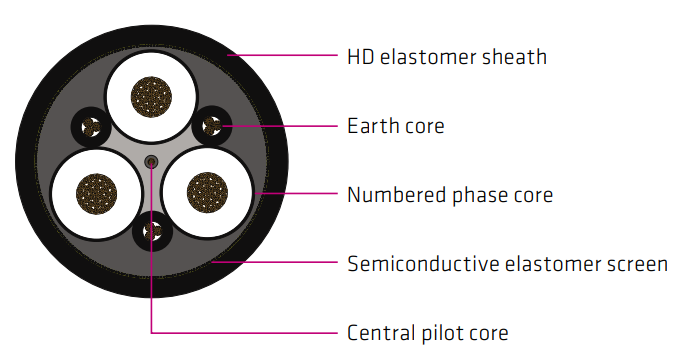

Introduction
Overview of Type 241 Cable
The Type 241 mining cable represents a significant advancement in underground mining power distribution systems, specifically engineered to meet the demanding requirements of modern longwall operations and continuous mining equipment. This specialised cable features semiconductive elastomer screened power cores, complemented by three earth cores and a central extensible pilot conductor, making it ideally suited for applications requiring exceptional flexibility and reliable power transmission in challenging underground environments.
Designed with mining operations in mind, the Type 241 mining cable addresses critical operational needs including tight bend-radius requirements for cable chains, enhanced safety through superior earthing systems, and integrated monitoring capabilities through its pilot conductor design. The cable's construction enables seamless integration into longwall shearer chains whilst maintaining electrical integrity under the extreme mechanical stresses typical of underground mining operations.
Compliance with AS/NZS 1802 Standard
The Type 241 AS/NZS 1802 power cable adheres strictly to Australian and New Zealand mining cable standards, ensuring compliance with regulatory requirements across both jurisdictions. This certification guarantees that the cable meets stringent safety, performance, and durability criteria essential for underground mining applications. The AS/NZS 1802 standard encompasses critical aspects including insulation performance, conductor specifications, screening effectiveness, and mechanical robustness required for mining environments.
Compliance with AS/NZS 1802 provides mining operators with confidence in the cable's ability to perform reliably under extreme conditions, including exposure to moisture, mechanical stress, chemical contaminants, and temperature variations commonly encountered in underground mining operations. The standard also ensures compatibility with existing mining infrastructure and maintenance practices across Australian and New Zealand mining facilities.
Importance of Bend-Radius and Pilot Conductors in Mining Applications
Modern mining operations, particularly longwall systems and continuous miners, demand cables capable of withstanding repeated flexing and tight bending without compromising electrical performance. The tight bend mining cable design of the Type 241 addresses these requirements through its specialised construction, enabling installation in cable chains and mobile equipment where space constraints demand minimal bend radii.
The inclusion of an extensible pilot conductor provides crucial machine monitoring capabilities, allowing real-time assessment of cable integrity and equipment performance. This pilot-conductive power cable for continuous miners enables predictive maintenance strategies, reducing unplanned downtime and enhancing operational safety through continuous monitoring of electrical parameters and potential fault conditions.
Key Features and Benefits
Semiconductive Elastomer Screened Power Cores
The Type 241 cable incorporates semiconductive elastomer screens around each power core, providing superior electrical performance and enhanced safety characteristics. These screens ensure uniform electric field distribution around the conductor, reducing the risk of partial discharge and extending cable service life. The elastomer material maintains flexibility whilst providing effective screening, making it ideal for applications involving frequent flexing and movement.
The semiconductive screening technology also contributes to improved fault detection capabilities, enabling more precise identification of insulation deterioration or damage. This feature is particularly valuable in mining applications where early fault detection can prevent catastrophic failures and associated safety risks.
Three Earth Cores for Enhanced Grounding
The three earth core extensible pilot mining cable configuration provides redundant earthing pathways, significantly enhancing electrical safety in underground environments. This design ensures reliable earth fault protection even if one or more earth conductors become damaged during operation. The earth cores are strategically positioned within the cable interstices, maintaining mechanical balance whilst providing optimal earthing performance.
The enhanced earthing system is particularly crucial for mining applications where personnel safety depends on reliable earth fault protection. The three earth cores also provide improved fault current carrying capacity, ensuring effective operation of protection systems during fault conditions.
Extensible Pilot Conductor for Machine Monitoring
The central pilot conductor serves multiple functions, including machine monitoring, control signal transmission, and cable integrity assessment. This pilot conductor is designed to be extensible, accommodating the mechanical stresses associated with mobile mining equipment whilst maintaining electrical continuity. The pilot conductor enables real-time monitoring of cable performance parameters, providing valuable data for maintenance planning and fault prevention.
Advanced monitoring systems can utilise the pilot conductor for continuous assessment of cable temperature, insulation resistance, and mechanical stress levels. This capability supports predictive maintenance strategies, reducing operational costs and improving equipment reliability.
Tight Bend-Radius Design for Cable Chains
The Type 241 cable's construction enables operation at significantly reduced bend radii compared to conventional mining cables, making it ideal for cable chain applications common in longwall and continuous mining systems. The cable's flexible design accommodates repeated bending cycles without degradation of electrical or mechanical properties, ensuring long-term reliability in dynamic applications.
The tight bend-radius capability is achieved through optimised conductor stranding, specialised insulation materials, and carefully engineered cable geometry. This design enables installation in confined spaces whilst maintaining full electrical performance, addressing a critical requirement in modern mining operations.
Durability in Continuous Miner and Feeder Cable Roles
Engineered for the harsh conditions of underground mining, the Type 241 cable features robust construction materials and design elements that ensure reliable performance in continuous miner and feeder cable applications. The heavy-duty HD-85-PCP sheath provides excellent protection against abrasion, chemical attack, and mechanical damage whilst maintaining flexibility required for mobile applications.
The cable's durability extends to its electrical characteristics, with insulation materials selected for long-term stability under thermal and electrical stress. This durability translates to reduced maintenance requirements and extended service life, providing significant economic benefits in mining operations.
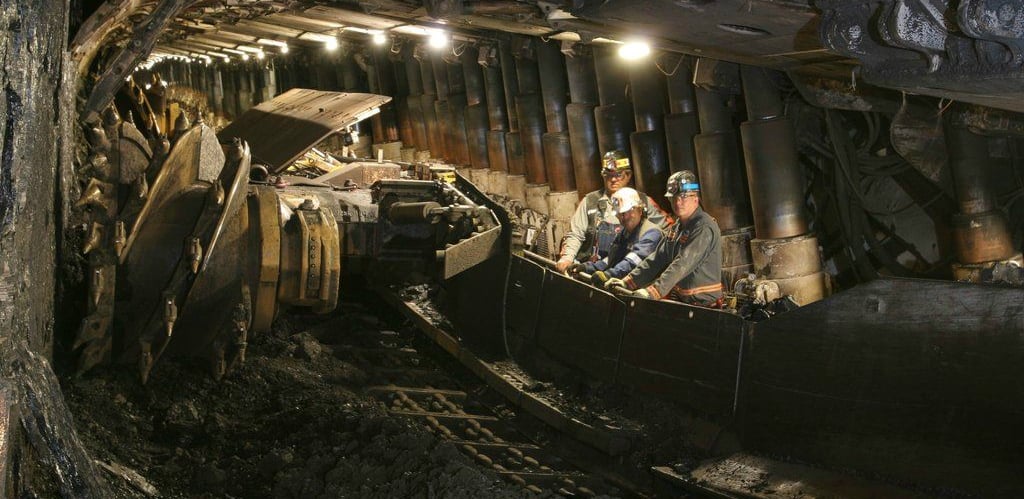

Technical Specifications
Voltage Rating: 1.1–11 kV
The Type 241 cable is available in multiple voltage ratings from 1.1 kV to 11 kV, accommodating various mining power distribution requirements. The voltage rating progression includes Type 241.1 (1.1 kV), Type 241.3 (3.3 kV), Type 241.6 (6.6 kV), and Type 241.11 (11 kV) variants, each optimised for specific application requirements.
Each voltage rating features appropriate insulation thickness and screening arrangements to ensure reliable performance at the specified voltage level. The insulation system utilises EPR (R-EP-90) technology, providing excellent electrical properties and thermal stability across the full voltage range.
Conductor Sizes and Insulation Thicknesses
The cable is available in conductor sizes ranging from 6 mm² to 300 mm², accommodating power requirements from auxiliary equipment to main distribution feeders. Conductor sizes include 6, 10, 16, 25, 35, 50, 70, 95, 120, 150, 185, 240, and 300 mm², each featuring optimised stranding for flexibility and current carrying capacity.
Insulation thicknesses vary according to voltage rating and conductor size, ranging from 1.5 mm for low voltage applications to 7.6 mm for 11 kV ratings. The insulation system incorporates durably printed core numbers at intervals less than 300 mm, facilitating identification during installation and maintenance operations.
Electrical Characteristics (Resistance, Reactance, Voltage Drop)
The Type 241 cable exhibits excellent electrical characteristics across all conductor sizes and voltage ratings. AC resistance values range from 4.32 Ω/km for 6 mm² conductors to 0.0847 Ω/km for 300 mm² conductors at 90°C and 50 Hz. These low resistance values ensure efficient power transmission with minimal losses.
Reactance values are similarly optimised, ranging from 0.148 Ω/km for smaller conductors to 0.0848 Ω/km for larger sizes, enabling effective power factor management in mining distribution systems. Three-phase voltage drop characteristics range from 7.49 mV/A.m to 0.208 mV/A.m, supporting efficient power delivery over extended cable runs.
Capacity to Earth and Frequency Performance
Capacitance to earth values range from 0.150 μF/phase/km to 0.727 μF/phase/km depending on conductor size and voltage rating, providing predictable performance for protection system coordination. The cable's frequency response characteristics at 50 Hz ensure compatibility with standard mining power systems whilst maintaining low losses and stable performance.
These electrical characteristics support reliable operation of modern mining equipment, including variable frequency drives, sophisticated control systems, and sensitive monitoring equipment commonly employed in contemporary mining operations.
Mechanical Dimensions and Mass per 100 m
Cable diameters range from 29.9 mm for the smallest configuration to 111 mm for the largest, with masses ranging from 130 kg/100m to 2035 kg/100m. These dimensions reflect the cable's robust construction whilst maintaining practical handling characteristics for mining applications.
The sheath thickness varies from 3.8 mm to 11.0 mm depending on cable size and application requirements, providing appropriate mechanical protection whilst maintaining flexibility. Earth core areas range from 1 mm² to 50 mm², ensuring adequate earthing capacity across all cable variants.
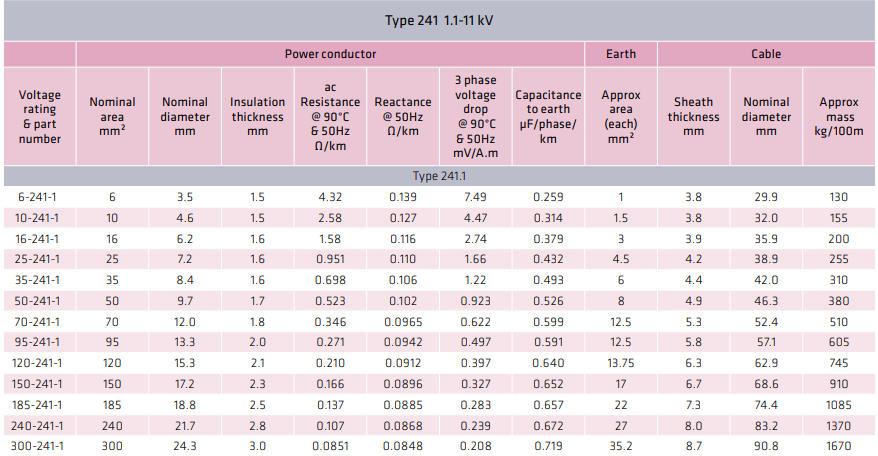


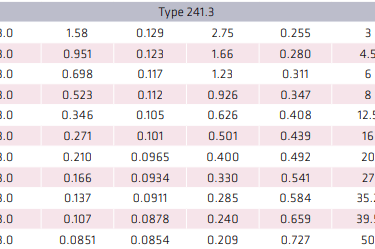

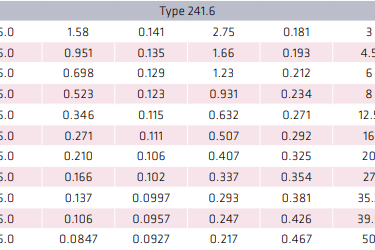

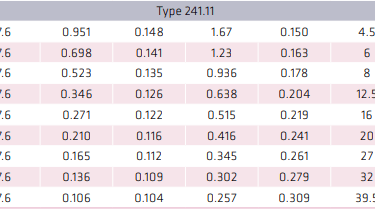
Primary Applications
Longwall Shearer Cable Chains
The Type 241 AS/NZS 1802 cable for longwall shearers represents the ideal solution for cable chain applications in modern longwall mining systems. The cable's tight bend-radius capability enables integration into shearer cable chains without compromising electrical performance, whilst the pilot conductor provides essential monitoring capabilities for these critical power transmission systems.
Longwall operations demand cables capable of withstanding continuous flexing as shearers traverse the coal face, making the Type 241's flexible design and robust construction essential for reliable operation. The three earth cores provide enhanced safety in these high-risk environments, whilst the semiconductive screening ensures stable electrical performance throughout the cable's service life.
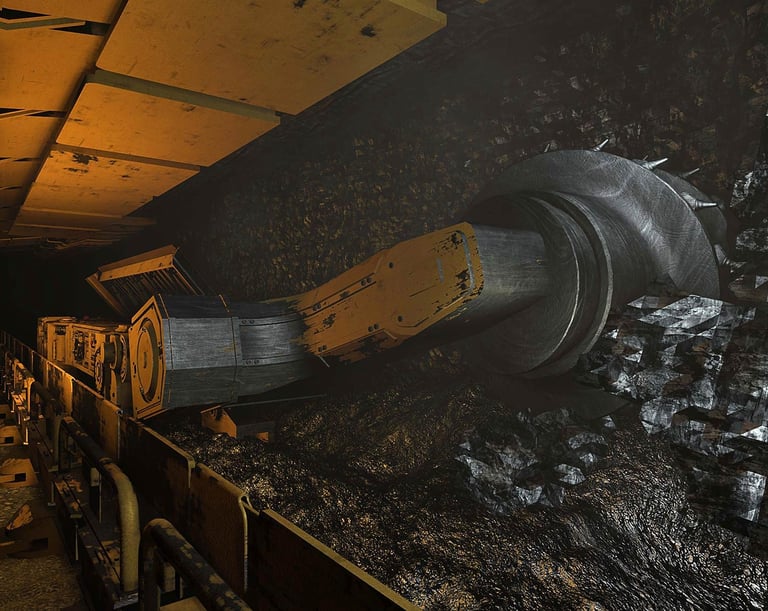

Continuous Miner Power Feeders
Continuous mining operations benefit significantly from the Type 241's design characteristics, particularly its flexibility and monitoring capabilities. The pilot-conductive power cable for continuous miners enables real-time assessment of cable condition whilst providing reliable power transmission to these mobile mining machines.
The cable's ability to accommodate frequent movement and positioning changes makes it ideal for continuous miner applications where cables must flex repeatedly during normal operation. The robust construction withstands the harsh conditions associated with continuous mining operations, including exposure to coal dust, moisture, and mechanical stress.
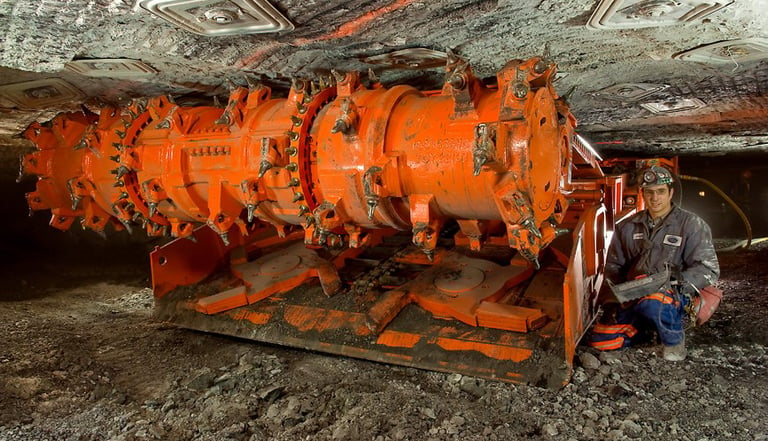

Pump Station Feeder Cables
Mining dewatering systems require reliable power transmission to pump stations often located in challenging underground environments. The Type 241 cable's durability and electrical performance characteristics make it well-suited for pump station feeder applications where reliability is paramount for operational safety.
The cable's resistance to moisture and chemical attack ensures reliable operation in pump station environments, whilst the enhanced earthing system provides superior safety characteristics essential for equipment operating in potentially wet conditions.
Monorail DCB Supply Lines
The monorail DCB feeder cable Type 241 configuration provides an optimal solution for powering distribution control boards along monorail systems. The cable's compact design and tight bend-radius capability enable routing through confined spaces typical of monorail installations, whilst maintaining full electrical performance.
The pilot conductor capability supports integration with modern monitoring systems used in monorail operations, enabling remote assessment of power system status and facilitating predictive maintenance strategies.
Other Mining Machinery and Auxiliary Systems
Beyond primary applications, the Type 241 cable serves various auxiliary mining systems including ventilation equipment, conveyor drives, and workshop facilities. The cable's versatility and range of available sizes accommodate diverse power requirements throughout mining operations.
The cable's compliance with AS/NZS 1802 standards ensures compatibility with existing mining infrastructure, simplifying specification and installation processes whilst maintaining consistent performance standards across mining operations.
Installation and Handling Guidelines
Minimum Bend Radius Requirements
Proper installation of Type 241 cables requires adherence to minimum bend radius specifications to ensure long-term reliability and performance. The cable's design enables operation at tighter bend radii than conventional mining cables, but minimum limits must still be observed to prevent damage to conductors, insulation, or screening systems.
Minimum bend radius requirements vary according to cable diameter and voltage rating, typically ranging from 6 to 10 times the cable diameter for dynamic applications. Static installations may accommodate slightly tighter radii, but dynamic applications involving cable chains or mobile equipment require more conservative bend radius limits.
Cable Chain Integration Tips
Successful integration into cable chain systems requires careful attention to cable support, bend radius control, and mechanical stress management. The Type 241 cable should be supported at regular intervals within cable chains to prevent excessive sag or stress concentration, whilst ensuring adequate flexibility for normal chain operation.
Cable chain design should incorporate appropriate bend radius control mechanisms and stress relief features to maximise cable service life. Regular inspection of cable chain installations helps identify potential issues before they result in cable failure or operational disruption.
Jointing and Termination Best Practices
Professional jointing and termination practices are essential for achieving reliable performance from Type 241 cables. All joints and terminations should be executed by qualified personnel using approved materials and techniques appropriate for the cable's voltage rating and application environment.
Particular attention should be paid to maintaining screening continuity and earth core connections, as these features are critical for safe operation in mining environments. Joint and termination designs should accommodate the cable's flexibility requirements whilst maintaining electrical integrity under mechanical stress.
Routine Inspection and Maintenance Procedures
Regular inspection and maintenance programs help ensure continued reliable performance from Type 241 cable installations. Inspection procedures should include visual assessment of cable condition, electrical testing of insulation integrity, and evaluation of earth core continuity.
The pilot conductor can be utilised for continuous monitoring applications, providing real-time data on cable performance and enabling predictive maintenance strategies. Regular testing should be documented to establish performance trends and identify potential issues before they impact operations.
Common Questions and Potential Issues
What are the signs of cable deterioration in mining environments?
Key indicators of cable deterioration include visible damage to the outer sheath, reduced insulation resistance readings, increased earth leakage currents, and abnormal pilot conductor readings. Regular monitoring through the pilot conductor can detect deterioration before it becomes critical.
Physical inspection should focus on areas where cables experience high mechanical stress, such as cable chain attachment points and areas where cables may rub against equipment or infrastructure. Early detection and remedial action can prevent costly failures and safety incidents.
How does the pilot conductor enhance safety in underground mining?
The pilot conductor provides continuous monitoring capabilities that enable early detection of cable faults or deterioration. This early warning capability allows maintenance teams to address issues before they compromise safety or cause operational disruptions.
Additionally, the pilot conductor can be integrated with mine-wide monitoring systems to provide real-time status information on critical power cables, supporting comprehensive safety management strategies throughout underground operations.
What maintenance practices extend Type 241 cable service life?
Regular inspection, proper cable support, and adherence to minimum bend radius requirements significantly extend cable service life. Implementing predictive maintenance strategies based on pilot conductor monitoring can identify potential issues before they result in failures.
Maintaining clean, dry cable storage and handling practices prevents contamination that could accelerate deterioration. Proper jointing and termination techniques using quality materials ensure long-term reliability at connection points.
Conclusion
Summary of Type 241 Advantages
The Type 241 AS/NZS 1802 mining cable offers numerous advantages for underground mining applications, including superior flexibility for cable chain applications, enhanced safety through three earth cores, and integrated monitoring capabilities via the extensible pilot conductor. The cable's compliance with Australian and New Zealand standards ensures regulatory compliance whilst providing reliable performance in challenging mining environments.
The cable's electrical characteristics, including low resistance and reactance values, support efficient power transmission with minimal losses. The robust construction withstands the mechanical and environmental stresses typical of mining operations, providing long-term reliability and reduced maintenance requirements.
Why Choose Type 241 for Mining Power Applications
The Type 241 mining cable represents an optimal solution for modern mining operations requiring reliable power transmission with enhanced monitoring capabilities. The cable's tight bend-radius design enables installation in space-constrained applications whilst maintaining full electrical performance, addressing critical requirements in longwall and continuous mining operations.
The comprehensive range of conductor sizes and voltage ratings ensures availability of appropriate configurations for diverse mining applications, from auxiliary equipment to main distribution feeders. The cable's durability and electrical performance characteristics provide excellent value for mining operations seeking to minimise maintenance costs whilst maximising operational reliability.
Contact and Ordering Information
For detailed technical specifications, application guidance, or ordering information for Type 241 AS/NZS 1802 mining cables, contact qualified mining cable specialists who can provide expert advice on cable selection and installation requirements. Professional support ensures optimal cable performance and compliance with applicable safety standards in mining environments.
Proper specification and installation of Type 241 cables contribute significantly to mining operation safety, efficiency, and reliability, making professional consultation a valuable investment in operational success.
How to Reach Us
Get in Touch
SiteMap
Product Catalogue
Reeling Cable
Festoon Cable
Shore Power Cable




Scan to add us on WeChat
